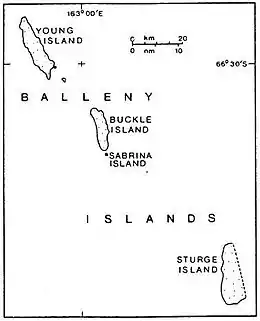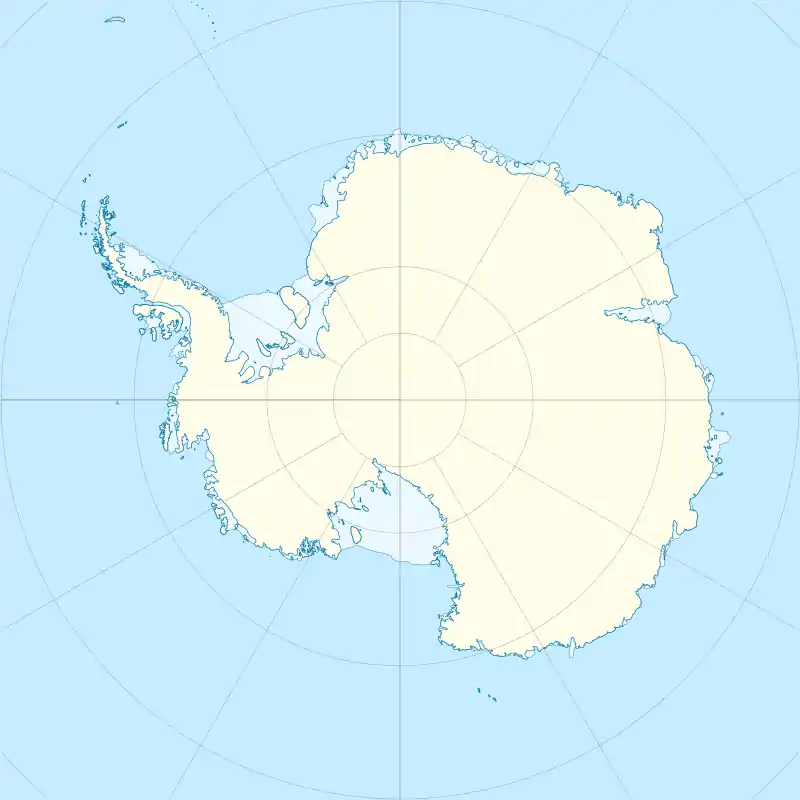Young Island
Young Island (66°17′S 162°25′E) is the northernmost and westernmost of the three main islands in the uninhabited Balleny Islands group located in the Southern Ocean. It lies 8 kilometres (5.0 mi) northwest of Buckle Island, some 115 kilometres (71 mi) north-northeast of Belousov Point on the Antarctic mainland.
 Young Island is the northernmost of the Balleny Islands | |
 Young Island Location in Antarctica | |
| Geography | |
|---|---|
| Location | Antarctica (Subantarctic island) |
| Coordinates | 66°17′S 162°25′E |
| Archipelago | Balleny Islands |
| Length | 35 km (21.7 mi) |
| Width | 7 km (4.3 mi) |
| Highest elevation | 1,340 m (4400 ft) |
| Administration | |
| Administered under the Antarctic Treaty System | |
| Demographics | |
| Population | Uninhabited |
The island is roughly semi-oval in shape, with a long straight east coast and a curved west coast meeting at Cape Scoresby in the south and Cape Ellsworth in the north. The distance between these two capes is 19 nautical miles (22 mi), and at its widest the island is 4 nautical miles (4.6 mi) across.[1] The island is volcanic, with active fumaroles, and a height of 1,340 metres (4,400 feet). It is entirely covered with snow. An explosive VEI-7 eruption occurred from Young Island 1,700,000 years ago.[2]
Several small islets lie in the channel separating Cape Scoresby and Buckle Island, the largest of which is Borradaile Island. Several sea stacks lie off the island's northern tip. These are known as the Seal Rocks.
The island forms part of the Ross Dependency, claimed by New Zealand (see Antarctic territorial claims).
On some days near the Southern Hemisphere summer solstice, Young Island is the first place on land to have a sunrise - that is, the sun sets very briefly, and then rises again earlier in the day than anywhere else on Earth.[3]
References
- U.S. Geological Survey Geographic Names Information System: Young Island
- "VOGRIPA". Archived from the original on 14 May 2016.
- Coffey, Donavyn (5 December 2022). "Where on Earth does the sun rise first?". livescience.com. Retrieved 6 December 2022.
- LeMasurier, W. E.; Thomson, J.W., eds. (1990). Volcanoes of the Antarctic Plate and Southern Oceans. American Geophysical Union. p. 512 pp. ISBN 0-87590-172-7.
External links
- "Young Island". Global Volcanism Program. Smithsonian Institution. Retrieved 24 June 2021.